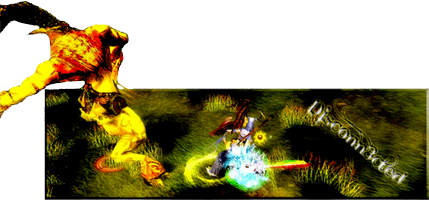The normal D is for normal driving.
The D with the box around it is your overdrive. This is for freeway coasting and whatnot.
Its no different from an automatic like this.
Say your car is a four gear automatic.
In drive, your car will use 1-3.
In overdrive, your car will use 1-4.
Why would you want to choose?
If your in the city and you have it in overdrive, your car will use 4th any time it coasts. Then say you want to pass someone or speed up, that gear isnt very powerfull and it will hesistate, drop down a gear before speeding up.
However, on the freeway you want that highest gear for coasting, and to keep your RPMS lower.
Think about how gears work.
1. Most powerfull, high torque and accelleration. However, very low top speed and extremely high RPMs
4. Most top speed, least work for the car to coast, low RPMS. Almost no power and acceleration though.
[edit]
From wikipedia =)
Quote:
Generally speaking, overdrive (OD) is the highest gear in the transmission. Most automatic transmissions have three speeds and overdrive (fourth speed). Overdrive allows the engine to operate at a lower rpm for a given road speed. This allows the vehicle to achieve better fuel efficiency, and often quieter operation on the highway. When it is switched on, the transmission can shift into overdrive mode after a certain speed is reached (usually 70+ km/h [43+ mph] depending on the load). When it is off, the transmission shifting is limited to the lower gears. For normal driving conditions, operation of the overdrive should be enabled only if the average speed is above 70 km/h (approx. 43 MPH).
It may be necessary to switch it off if the vehicle is being operated in a mountainous area.
The automatic transmission automatically shifts from OD to third gear when more load is present. When less load is present, it shifts back to OD. Under certain conditions, for example driving uphill, or towing a trailer, the transmission may "hunt" between OD and the third gear, shifting back and forth. In this case, switching it off can help the transmission to 'decide'. It may also be advantageous to switch it off if engine braking is desired, for example when driving downhill. The vehicle's owner's manual will often contain information and suitable procedures regarding such situations, for each given vehicle.
Overdrive was widely used in automobiles with manual transmission particularly in Europe (see below) and was commonly available on either top gear alone, or on top gear and the gear immediately below (eg third gear and fourth gear. In this case gear changing is still possible in all gears, even with overdrive disconnected. Overdrive simply adds effective ranges to the gears, thus overdrive third and fourth become in effect "third-and-a-half" and a fifth gear. In practice this can lead to an overlap of gears in the third/fourth and overdrive-third/overdrive-fourth ranges, providing greater flexibility particularly in performance cars.























